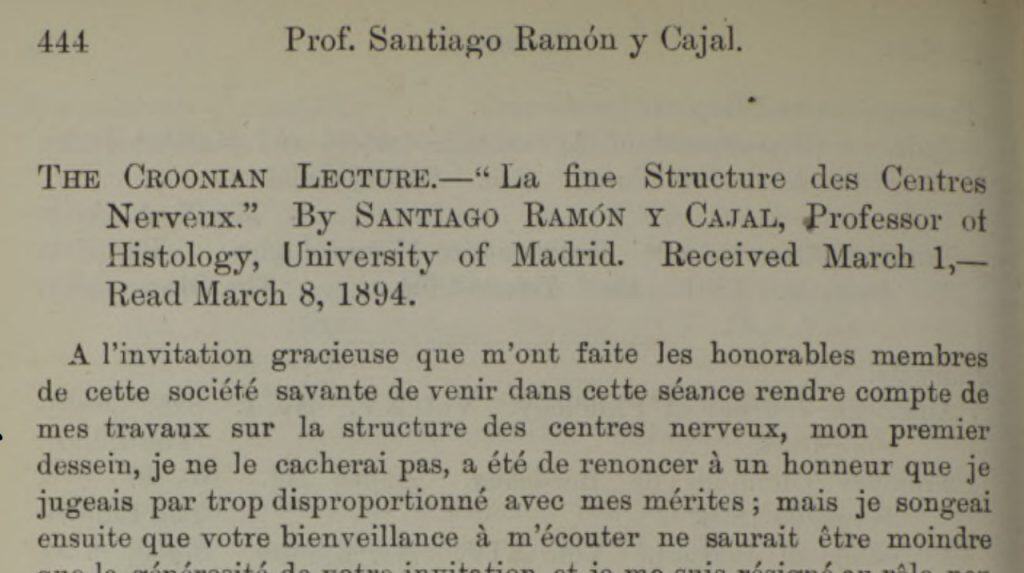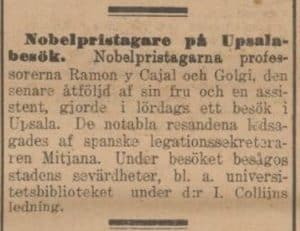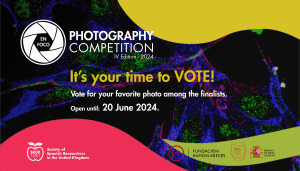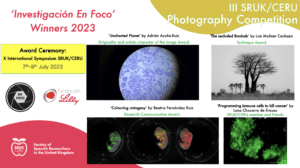Santiago Ramón y Cajal visited the UK in 1894. He was invited to give lectures as part of the prestigious Croonian Lectures at the Royal Society in London. Cajal’s lecture took place in March 1894, titled “La rétine des vertébrés” (The Retina of Vertebrates), and focused on his groundbreaking research on the nervous system. Specifically, his study pioneered the understanding of the structure and function of the retina, a part of the eye that contains neuronal photoreceptors. The published article and the lecture were entirely in French, as it was the dominant language of science and academia in Europe at that time.
Although English is now the most widely used international language for various forms of communication, having a common language is crucial for making information accessible to the majority of people and fostering collaborations.


Sir Charles Scott Sherrington invited Santiago Ramón y Cajal to visit the UK. Sherrington was a British neurophysiologist who later won the Nobel Prize in 1932. He was a strong supporter of Cajal’s “Neural Theory,” which proposed that neurons were individual units and not physically connected. Sherrington introduced the concept of the “synapse,” the space where information travels between neurons, a term still in use today. Synapses are the space between neurons, which continued with Cajal’s “neuronal theory”.
During this trip, Cajal also visited Oxford and Cambridge. In Cambridge, Sir Charles S. Sherrington hosted him, allowing him to interact with prominent scientists and tour laboratories. Later, he traveled to Oxford at the invitation of Sir Michael Foster, a physiologist and a key figure at the Royal Society, who likely facilitated Cajal’s visit. In Oxford, Cajal shared his knowledge of human anatomy, not just topics related to the central nervous system. His visit helped establish his international reputation and fostered collaborations and exchanges of ideas with British researchers.
Later, Santiago Ramón y Cajal was elected as a Foreign Member of the Royal Society in 1909, an acknowledgment of his groundbreaking contributions to neuroscience. This recognition strengthened the connection between Cajal and the UK even after his death on October 17, 1934, in Madrid. The Royal Society published an obituary summarizing his life and highlighting his immense contributions to science, particularly neuroscience.






